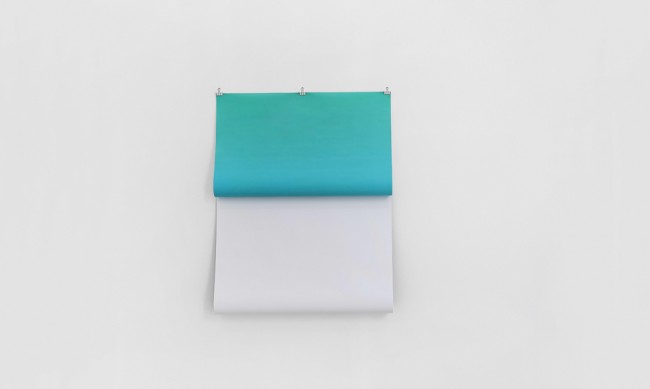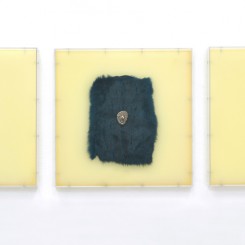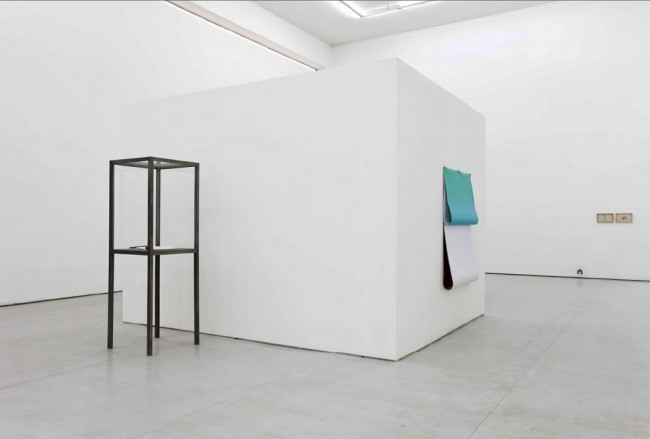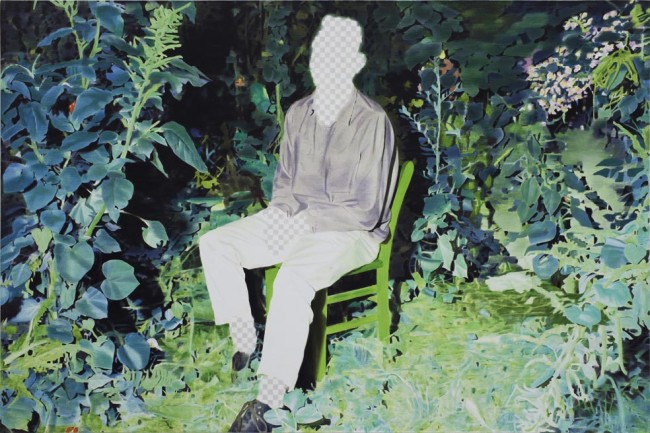“Memo 1” – group exhibition with Chen Duxi, Gao Lei, Gu Ying, He Xiangyu, Li Shurui, Liu Ren, Liu Xinyi, Lu Yang, Wang Qiang, Yang Jian, Zhai Liang, Zhang Ruyi and Zhou Siwei.
White Space (No.255, Caochangdi Airport Service Road Chaoyang District Beijing 100015) Mar 9 – May 5, 2013
The idea of a Memo creates a fitting sense of annotation around these pieces; it suggests a note, a record or reminder of these artists’ work as something not to be forgotten. Though this might seem an odd imperative for their representing gallery (whose general task it is to make sure we see and remember them), perhaps this is a good way to treat the work of young artists whose practice and propositions are very much in progress.
There are works by thirteen artists here that clearly demonstrate White Space’s conceptual bent, as well as what makes it a worthwhile gallery. Noticeably, many of them tend towards the blank and economical end of the spectrum, with some almost melting into the blanched walls and floor. “Sea Grain” (2013) by Liu Ren, for example, is a rectangle of salt at one’s feet in which sit a sprinkling of small painted cubes. Nearby on the wall is a rhythmic offering from Li Shurui — “Thirteen Triangles” (2010-2011) of wood painted in barely-there shades of green, skilfully fused together. More than her coloured paintings pursuing the depiction of light, these 3D pieces have the convincing quality of being able to suggest another order, or an abstract thread of which one feels confident of seeing more examples in the future. Zhou Siwei’s “Sunrise 12” (2013) is simply two sheets of paper — a blue one above a white — looped underneath, the tops held together with metal stationary clips. The subtle shading caused by their arrangement, with gradients of shadow flowing from the fold, is where one could find an evocation of the work’s title. More grounded in the real and its residues, opposite the entrance, is a glass case containing He Xiangyu’s “United States Declaration of Independence” (2012) — Coca Cola resin writings on paper. One wonders what the artist’s planned move to America this year will throw up in his practice.

Zhou Siwei, “Sunrise (1/2)”, digital printing, 150 x 120 x 30 cm, 2013.
周思维, “日出(1/2)”, 数码喷绘, 150 x 120 x 30 cm, 2013.
Further into the room, one is reminded that small works – especially well-positioned – needn’t be inconsequential. The numbered mixed-media pieces by Zhang Ruyi in wooden frames (“40, 42, 45, 44, 47, 43”; 2012) draw one into little pictures of cacti on fields of meshed pencil line and backed with geometric shapes in light yellow or pink. The miniature iron tables held in suspension on the walls nearby, one hovering at nearly floor level and with cactus spines pricking through it, invite curiosity.
Towards the back of the room are the more possessing works – their movement, sound or colour gathering as one approaches. A striking painting by Wang Qiang shows a seated figure; where the flesh of hands, feet and head should be, eerily, is instead a grey and white checked pattern. Surrounding him is dense vegetation rendered lurid by a strong light which almost kills the sight of leaves in the foreground, and extracts a deep turquoise from those on the left of the frame. Between and behind the figure and plants is a clean, preternatural darkness. This is called “The Storyteller” (2012). Turning to face the film booth erected in the centre of the gallery, one receives a rougher dose from Lu Yang’s 5 minute work “The Beast” (2012) – admittedly a fashion video, but from which the her characteristic brute-biological aesthetic is not exempt.
A trilogy of mixed media assemblages encased in perspex (a decision which lends productive notions of protection and examination to them) by Gao Lei (“S-1, S-2, S-3”, 2013) occupy the final wall. Although not all the works are noted here, one has from “Memo” in general a positive sense of the artists’ collective endeavour; an experimental character pervades the room which is not overbearing, but instead pleasantly undermines a “normal” view. Take note.


